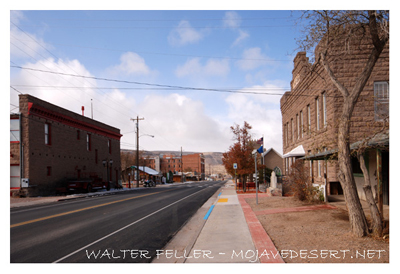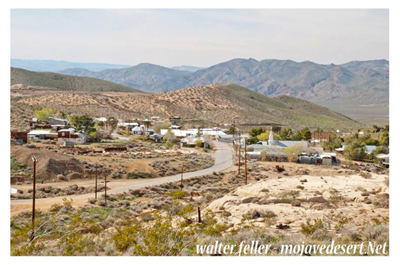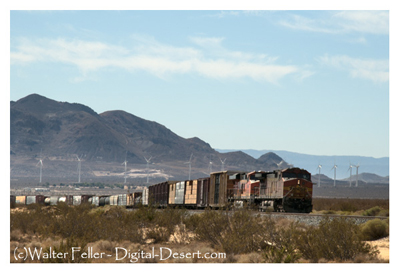At about the same Time
At about the same time, the widespread copper-stained volcanic rocks of the Greenwater Range, east of Death Valley, convinced many that a literal mountain of copper ore lay at depth. (Not a far-fetched idea, considering that in 1906, Kennecott began open-pit mining the Bingham Canyon Mine.) The town of Greenwater sprang up, fueled by frenzied stock speculation and encouraged by investment by some of the biggest names of the day in mining. By 1907 over 1,000 called Greenwater and its satellite communities home. The fact that the promised ore never materialized, coupled with the financial panic of 1907, caused the demise of Greenwater. Speculation in the railroad and banking industries led to a short but painful depression in 1907–1908. Many mines had to suspend operations; banks from Goldfield to Los Angeles failed.In a discovery that is reminiscent of Comstock, Randsburg prospectors recovering gold using dry placer methods had been bedeviled by “heavy spar” from the beginning. In 1904 the confounded heavy white mineral was found to be the tungsten ore, scheelite. Mining began in 1906 and continued through World War I. Production soared during the war years, as did the number of employees.
Primarily built to service construction of the Los Angeles aqueduct, the Southern Pacific completed a branch line from Mojave north to the southern Owens Valley in 1910. However, one of the largest mineral deposits in the United States was to benefit significantly from the new line. Borax recovery from Searles Lake had ceased in 1895, but in 1905 potash was identified in the lake brines. In 1913 the American Trona Corporation was incorporated to extract potash, soda ash, sodium sulfate, salt, and borax from the brines. A standard gauge railroad was completed to Searles Lake September 1, 1914, and at the same time a plant was constructed at Trona. A German embargo of potash fertilizer during World War I sharply raised potash prices, creating a rush of activity at Searles Lake—the only American source of potash at the time. With the decline of prices at the end of the war, potash was no longer economically recoverable. However the deposit continues to produce a host of products from the lake brine.
Between 1905 and 1910 the Santa Fe constructed a line from Phoenix, Arizona, crossed the Colorado River at Parker, and then continued north to the main line at Cadiz. On August 9, 1916 a branch line was completed to Blythe. In 1925 limestone mining began at Chubbuck midway between Cadiz and Rice. A short narrow gauge railroad was constructed from the mines to the kiln located along the railroad. Also in 1925, mining operations began at the large gypsum deposit at Midland, situated north of Blythe two miles west of the railroad.
In 1910 a nine-mile long rail line was constructed from Tecopa, on the Tonopah and Tidewater Railroad, to the Noonday and Gunsite lead-silver mines. The mines operated until 1918. Many other mines were able to operate economically along the T&T’s route as well, due to the cheap transportation it afforded.
Previous - Next

Goldfield, Nevada

Randsburg, California

Mojave, California